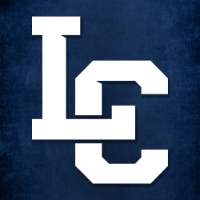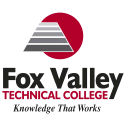What do they do?
Bind books and other publications or finish printed products by hand or machine. May set up binding and finishing machines.
Also known as:
Binder, Binder Operator, Bindery Cutter Operator, Bindery Folder Operator, Bindery Machine Operator, Bindery Operator, Bindery Technician, Bindery Worker, Book Binder, Book Finisher, Bookbinder, Case Binder Operator, Custom Bookbinder, Cutter, Folder Operator, Knife Operator, Perfect Binder Operator, Saddle Stitcher Operator, Spiral Binder Operator, Stitcher Operator
-
-5.1%
Change
Ranks #32 in job growth rate90Job Openings
Ranks #16 in net job growth
Looking for colleges that offer a specific major? Use the College Match Tool to find your best-matched schools and discover your estimated Net Price!
- High school diploma equivalent (48%)
- Some college, no degree (21%)
- Less than high school diploma (17%)
- Bachelor's degree (7%)
- Associate's degree (5%)
- Master's degree (1%)
- Doctorate or Professional Degree (<1%)
People in this career often know a lot about:
- Administration and Management - Knowledge of business and management principles involved in strategic planning, resource allocation, human resources modeling, leadership technique, production methods, and coordination of people and resources.
- Production and Processing - Knowledge of raw materials, production processes, quality control, costs, and other techniques for maximizing the effective manufacture and distribution of goods.
People in this career often have talent in:
- Problem Sensitivity - The ability to tell when something is wrong or is likely to go wrong. It does not involve solving the problem, only recognizing that there is a problem.
- Finger Dexterity - The ability to make precisely coordinated movements of the fingers of one or both hands to grasp, manipulate, or assemble very small objects.
- Near Vision - The ability to see details at close range (within a few feet of the observer).
- Oral Comprehension - The ability to listen to and understand information and ideas presented through spoken words and sentences.
- Oral Expression - The ability to communicate information and ideas in speaking so others will understand.
- Arm-Hand Steadiness - The ability to keep your hand and arm steady while moving your arm or while holding your arm and hand in one position.
- Manual Dexterity - The ability to quickly move your hand, your hand together with your arm, or your two hands to grasp, manipulate, or assemble objects.
People in this career often do these activities:
- Inspected printed materials or other images to verify quality.
- Study blueprints or other instructions to determine equipment setup requirements.
- Mount attachments or tools onto production equipment.
- Trim excess material from workpieces.
- Sew clothing or other articles.
- Operate sewing equipment.
- Watch operating equipment to detect malfunctions.
- Mount materials or workpieces onto production equipment.
- Record operational or production data.
- Clean production equipment.
- Lubricate production equipment.
- Repair production equipment or tools.
- Operate equipment to print images or bind printed images together.
- Cut industrial materials in preparation for fabrication or processing.
- Engrave designs, text, or other markings onto materials, workpieces, or products.
- Confer with customers or designers to determine order specifications.
- Stack finished items for further processing or shipment.
- Package products for storage or shipment.
- Load materials into production equipment.
- Adjust equipment controls to regulate flow of production materials or products.
- Instruct workers to use equipment or perform technical procedures.
- Drill holes in parts, equipment, or materials.
- Apply protective or decorative finishes to workpieces or products.
This page includes data from:

 Occupation statistics: USDOL U.S. Bureau of Labor Statistics Occupational Employment Statistics
Occupation statistics: USDOL U.S. Bureau of Labor Statistics Occupational Employment Statistics
 Videos: CareerOneStop, USDOL/ETA and the Minnesota Department of Employment & Economic Development
Videos: CareerOneStop, USDOL/ETA and the Minnesota Department of Employment & Economic Development










